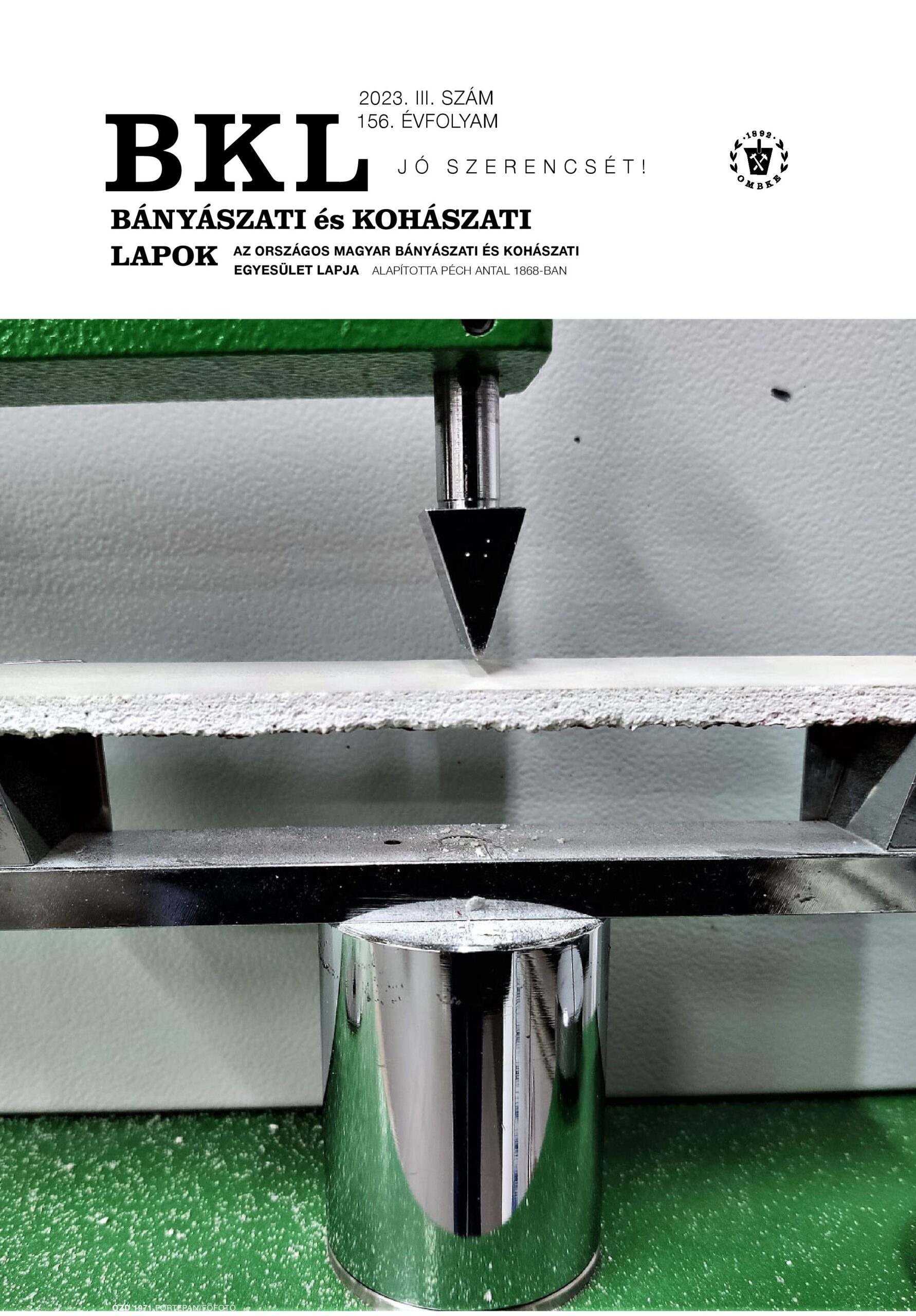Possibilities and characteristics of steel slag recycling in ironmaking
Abstract
The ironmaking technology is the most material and cost intensive step in the iron and steelmaking complex. Generally, the cost can be lowered by the recycling of waste of internal and external origin. The rate of recycling is limited by the pollutant content of waste, the energy demand of melting and the impact on the durability of the furnace lining. The steel production slag is waste of internal origin with several useful elements, few impurities, and does not contain environmentally or liner harmful substances.
The properties of the slags allow their use in blast furnaces as a first test, but their use in road construction also requires the control of a number of physical and rock properties such as fraction sizes, drum strength, frost resistance, chemical composition, heavy metal leaching, or the associated groundwater.
Another advantage of using blast furnaces is that the chemical composition of the slags has long been well known, and if deposited separately, a deposit of approximately the same homogeneity as the ores can be obtained.
One of the main questions will be whether the pure oxide fraction, which contains practically no metallic iron, can be used economically in the blast furnace.
The composition of the steel slag studied by the author was FeO = 17.5%, MnO = 6.5%, CaO = 52% and SiO2 = 17.6%. The slag value was investigated by the author using 3 methods. According to the trivial level of substitutability, 1 kg of slag can substitute 0.21 kg of Brazilian iron ore, 0.15 kg of Ukrainian Mn ore and 0.62 kg of common limestone.
Looking at the Fe content of the slag, the effective Fe content in the slag increases significantly when the excess CaO and Mn content is taken into account. The resulting self-fluxing steel slag has an effective Fe content of more than a Brazilian ore.
Of the methods examined, the most complete picture is provided by the total burden calculation, from which they can determine the effect of a given amount of steelmaking slag on all burden components, including coke consumption. The amount that can be used in practice depends not only on the P content of the steel slag, but also on the P content of the iron ores used and the steel to be produced. It is also possible to modify the amount used to improve the phosphorus removal conditions in steel production.
Summarising the tests, it can be concluded that the value of slag is equivalent to 50% of the cost price of an average agglo-ore, 40% of a concentrate and 30% of a pellet. By eliminating the effect of high P content, local slags can be used to replace 50–60% of Mn ore and 60–70% of limestone, reducing the cost of the burden by about 0.6%.
References
Lucy V. et al. (2019): The recycling and reuse of steelmaking slags. Resources, Conservation & Recycling Journal, 146, 244-255. https://doi.org/10.1016/j.resconrec.2019.03.010
Branca T. A., et al. (2020): Reuse and recycling of by-products in the steel sector: Recent achievements paving the way to circular economy and industrial symbiosis in Europe. Metals, 10, 345 https://doi.org/10.3390/met10030345
ISD Dunaferr Zrt. Termelési adatok. Acélműgyár, 2016
ISD Dunaferr Zrt. Termelési adatok. Nagyolvasztógyár, 2018
Vegman E. F.: Domennoje proizvodsztvo. Moszkva, Metallurgija kiadó, p. 177.
Farkas O. (1989): Nyersvasmetallurgia. Tankönyvkiadó, Budapest, p. 388.
Hári L. (2021): Nyersvasgyártás példatár. II. Magánkiadás, Dunaújváros, p. 98.



